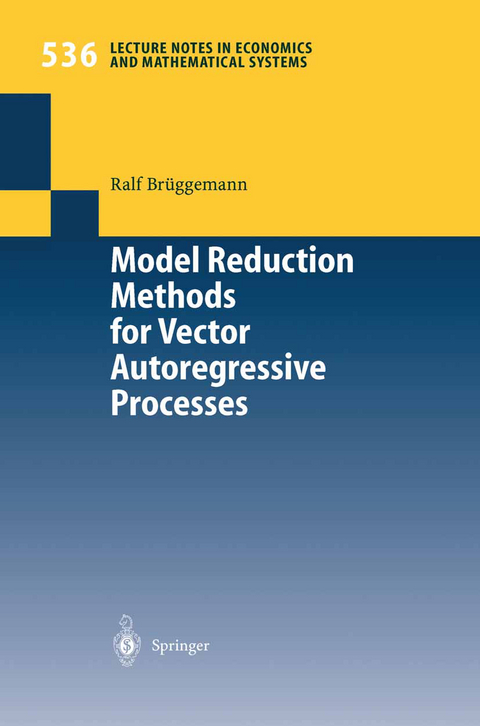
Model Reduction Methods for Vector Autoregressive Processes
Springer Berlin (Verlag)
978-3-540-20643-9 (ISBN)
1 Introduction.- 1.1 Objective of the Study.- 1.2 Outline of the Study.- 2 Model Reduction in VAR Models.- 2.1 The VAR Modeling Framework.- 2.2 Specification of Subset VAR Models.- 2.3 Monte Carlo Comparison.- 2.4 Summary.- 3 Model Reduction in Cointegrated VAR Models.- 3.1 The Cointegrated VAR Modeling Framework.- 3.2 Modeling Cointegrated VAR Processes.- 3.3 Data Based Model Reduction.- 3.4 Evaluation of Model Reduction Method.- 3.5 Summary.- 3.A DOP Parameters and Properties.- 4 Model Reduction and Structural Analysis.- 4.1 The Structural VAR Modeling Framework.- 4.2 Estimation of Structural VAR Models.- 4.3 Monte Carlo Experiments.- 4.4 Summary.- 4.A Time Series Plots.- 4.B DGP Parameters.- 5 Empirical Applications.- 5.1 The Effects of Monetary Policy Shocks.- 5.2 Sources of German Unemployment.- 5.3 Summary.- 5.A Data Sources.- 5.B Two Cointegrating Vectors.- 5.C VECM Estimates.- 6 Concluding Remarks and Outlook.- 6.1 Summary.- 6.2 Extensions.- Index of Notation.- List of Figures.- List of Tables.
| Erscheint lt. Verlag | 14.1.2004 |
|---|---|
| Reihe/Serie | Lecture Notes in Economics and Mathematical Systems |
| Zusatzinfo | X, 218 p. 4 illus. |
| Verlagsort | Berlin |
| Sprache | englisch |
| Maße | 155 x 235 mm |
| Gewicht | 355 g |
| Themenwelt | Mathematik / Informatik ► Mathematik ► Wahrscheinlichkeit / Kombinatorik |
| Wirtschaft ► Allgemeines / Lexika | |
| Wirtschaft ► Volkswirtschaftslehre ► Ökonometrie | |
| Schlagworte | Calculus • Cointegration • Modeling • Model Reduction • Structural VAR Models • Time Series • Time Series Econometrics • Vector Autogressive (VAR) Modeling |
| ISBN-10 | 3-540-20643-4 / 3540206434 |
| ISBN-13 | 978-3-540-20643-9 / 9783540206439 |
| Zustand | Neuware |
| Informationen gemäß Produktsicherheitsverordnung (GPSR) | |
| Haben Sie eine Frage zum Produkt? |
aus dem Bereich


